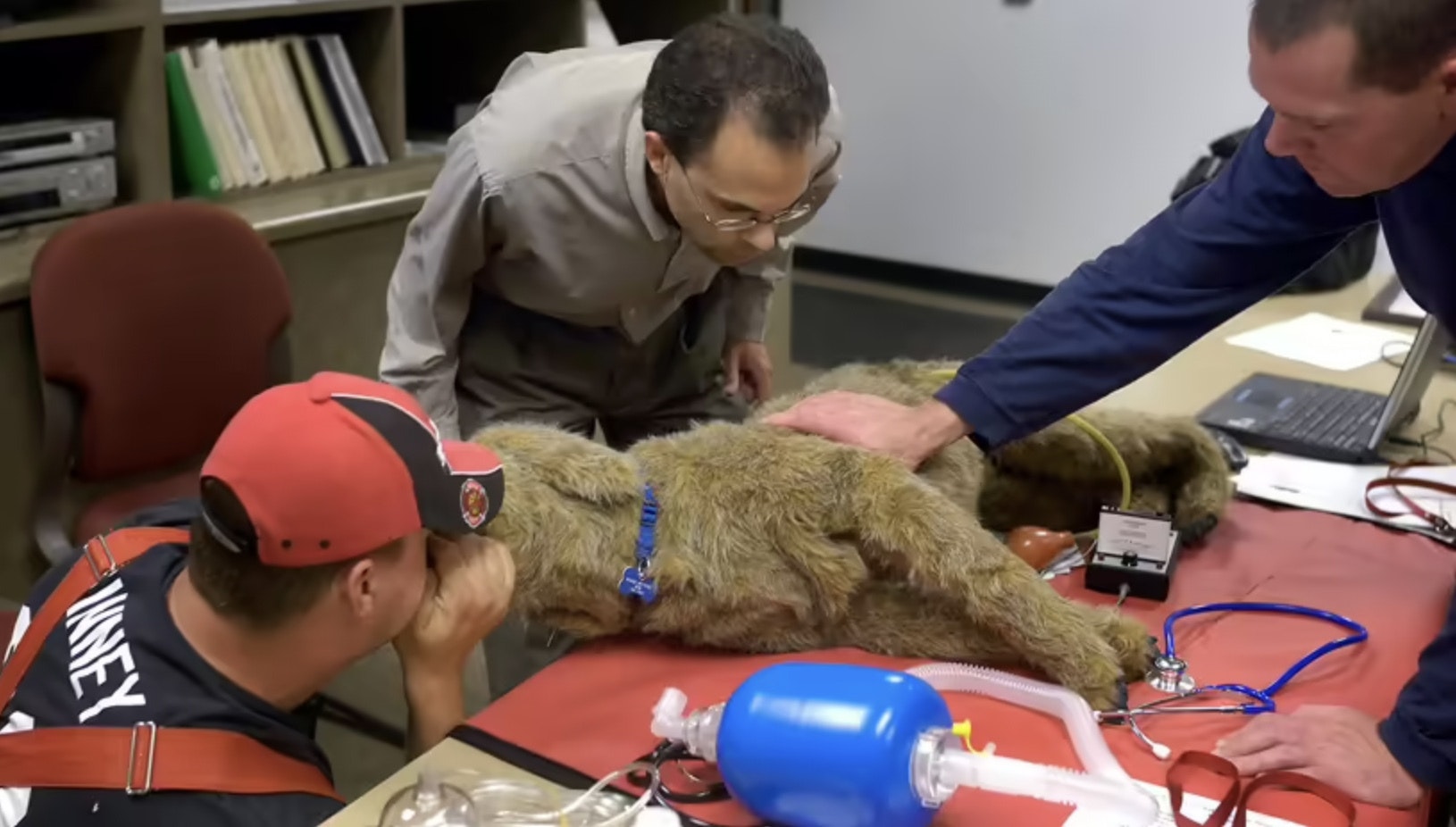Most people are familiar with the lifesaving maneuver mouth-to-mouth resuscitation. But mouth-to-snout?
A comment made about resuscitating a police dog by human mouth drew laughter from the House Labor, Health and Social Services Committee on Friday and brought state Rep. Dan Zwonitzer, R-Cheyenne, to tears.
“Mouth-to-snout, Mr. Chairman? Don’t sign me up,” said Wyoming Hospital Association President Eric Boley when Zwonitzer referenced the procedure, which is basically the same as for humans.
The comment was made while discussing Midwest Republican Rep. Bill Allemand’s proposed House Bill 233 that would have authorized emergency medical services providers to transport and treat injured police dogs by ambulance.
Within the approved care for EMS to provide to police dogs is mouth-to-snout resuscitation.
“I would argue that some of these dogs are probably cleaner than some of the humans we transport,” remarked Rep. Ken Clouston, R-Gillette.
All order was lost after Clouston’s point as the committee members laughed at remark.
It’s A Real Thing
But mouth-to-snout CPR is not a joke. It’s a legitimate emergency response procedure for animals in distress.
Cornell University Baker Institute For Animal Health recommends the procedure if chest compressions fail to revive a dog or cat.
The technique for mouth-to-snout is not much different than mouth-to-mouth with humans.
The Baker Institute directs the process as:
• Open your mouth.
• Put it over both of the pet’s nostrils.
• Make sure your mouth is sealed all around.
• Deliver a breath.
• Rather than perpetually blowing into the animal’s mouth, allow the animal to exhale.
• Repeat for one more breath.
Treating Police Dogs
Allemand brought up the potential scenario of a police dog sitting inside a squad car that’s hit by a moving vehicle.
He said if there were no humans who needed medical treatment on the scene, the dog deserves to be transported to a veterinarian clinic by ambulance if hurt.
It’s one thing to respond to hurt police dogs or other pets emergency responders come across, but it’s another to make EMTs and paramedics feel obligated to perform life-saving measures on them.
“I think these dogs are incredible in the work that they do, I just think that we might need to think this through a little before we pass legislation,” said Boley.
Under current law, injured dogs can be transported by police car, but Allemand said he does not know whether they are allowed to be taken by ambulance. He also said he didn’t speak with emergency medical responders prior to drafting his bill.
“Transportation and Care of Injured Police Dogs” would have specifically allowed it.
What About Pets?
Rep. Mike Yin, D-Jackson, asked if his pet dog could be transported by ambulance because of the law.
“No, your dog is not available sir, I’m sorry,” Allemand responded.
The committee voted 7-2 against the measure.
‘Just Being A Little Proactive’
Like many bills proposed so far during the 2023 legislative session there haven’t been any situations where this has been identified as a problem in the past, but Allemand saw it as getting ahead of a potential issue.
“This bill is looking at the future, taking a look at a problem, just being a little proactive,” he said.
It costs at least $30,000 to $40,000 for the state of Wyoming to institute a new law when accounting for required publishing costs and other clerical duties.
Zwonitzer said the only other time he could think of being brought to tears laughing during a committee meeting was when a constituent admitted to collecting and eating roadkill during discussion about a 2021 bill that allowed people to claim roadkill for harvest.





